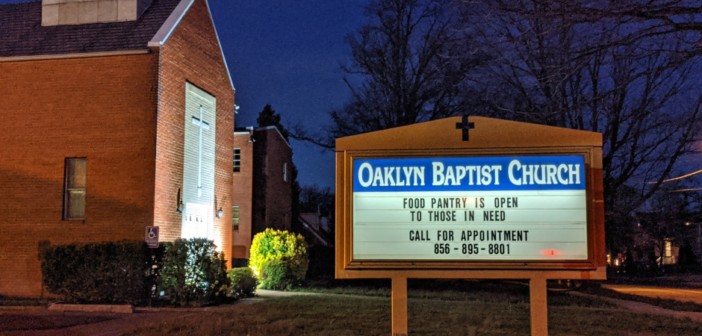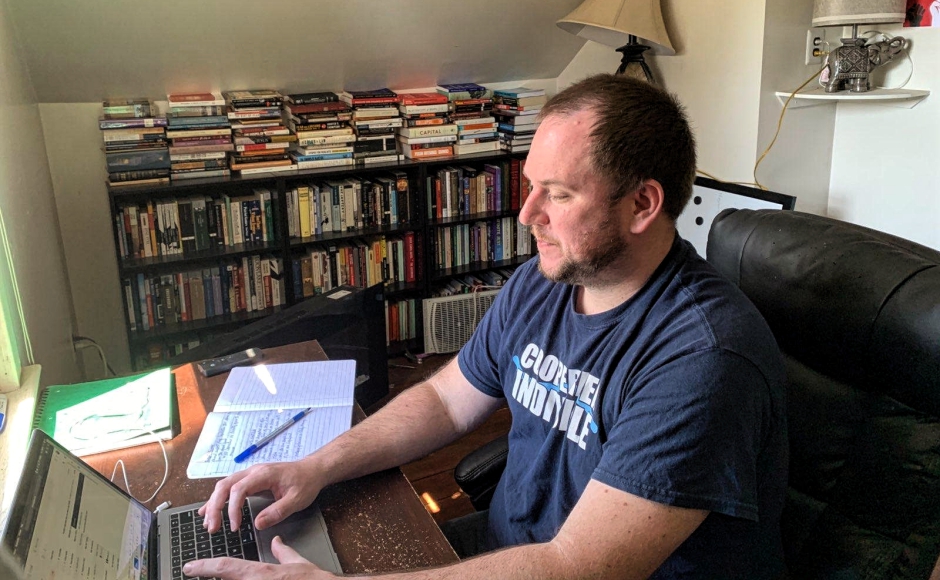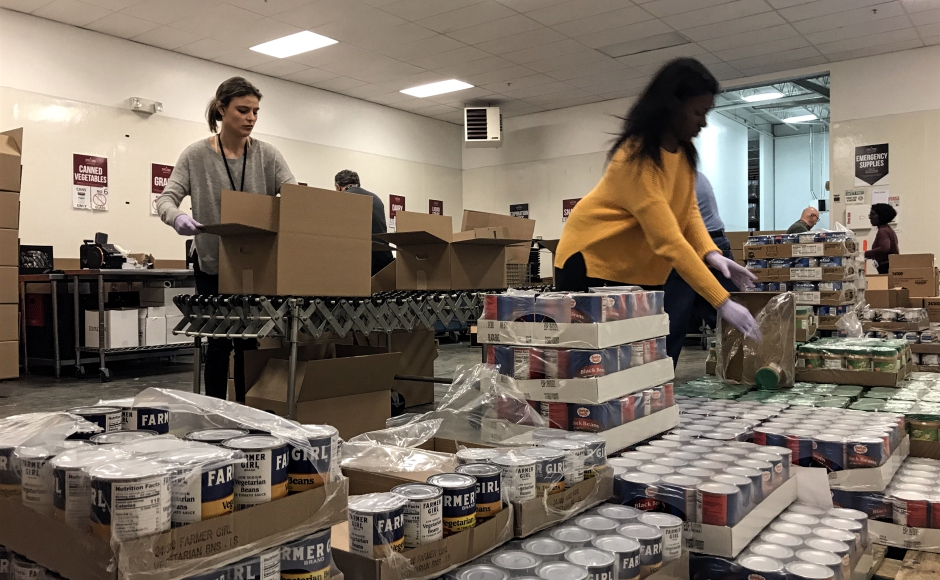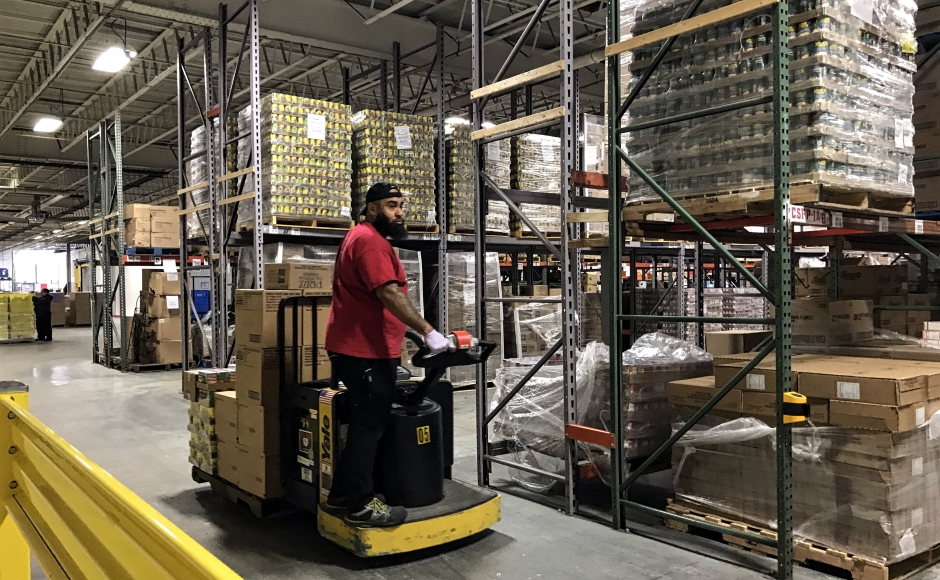Grassroots groups are fielding requests from needy families and offering to help deliver to them. But food pantries are bound by strict federal requirements that complicate their efforts.
By Matt Skoufalos | March 27, 2020
Since the start of the novel coronavirus (COVID-19) outbreak, middle-school teacher Adam Sheridan has divided his days between remotely coaching seventh-graders on their essays and helping some of their parents find enough food to fill their pantries.
As government-ordered shutdowns and temporary closures mounted, Sheridan and his fellow volunteers at the grassroots group Cooper River Indivisible began working to build a mutual aid response network for those whose needs have fallen between the cracks.
“We’ve always really embraced community organizing more than just activism, and tried to embrace a grassroots local organizing model,” Sheridan said.
“With this crisis, some of the skills and techniques that our leadership people have suddenly became really useful in a way that maybe people didn’t see a few weeks ago.”
By helping communities to build “neighborhood pods” for communicating their needs during the shutdown, the group is working to connect locals with those closest to them to share resources and check in on the isolated. In less than two weeks, they’ve added 400 volunteers and received requests for aid from 105 families from Burlington to Salem Counties, Sheridan said.
“A lot of people that we’ve connected with are people who don’t qualify for aid,” he said. “I was talking to someone yesterday who said she just needed a little bit of groceries to get caught up with everything. It’s a safety valve and it’s also a supplement, too.”
Yet for all the goodwill and available bodies, Sheridan and his volunteers are running into hurdles. Many who mobilized initially believed they could provide a last-mile delivery service, driving food from local pantries to needy people sequestered in their homes. But internal regulations governing the distribution of those products have made it challenging.
Woven into the charters of many pantries and the federal programs that stock them are policies “that probably serve them well during normal times, but are causing problems now,” Sheridan said.
Some regulations require food recipients to sign for their meals and take delivery of them in person.
Others prescribe behavior around the handling of products donated to those pantries.
Still more regulations limit the populations that pantries serve to previously defined geographic areas, even if there’s less of an immediate need there.
Some pantries have shuttered since the outbreak but still exist online; others have changed or limited their hours, further complicating relief. Meanwhile, the need for aid among New Jerseyans continues to climb as hundreds of thousands more file for unemployment amid work stoppages.
“We’ve run into a lot of red tape in the reliability of the whole system, when it’s much more needed than it was three weeks ago,” Sheridan said. “The pantries have food, and it’s just so frustrating. We’re hoping that they will give us some kind of blanket permission. I don’t know if that’s going to happen or not.”
According to Greg DeLozier, Senior Director of Advocacy and Government Relations at the Food Bank of South Jersey, such permission isn’t likely to come soon, even if the agency would appreciate the extra help.
“Their intention is great and their idea is phenomenal, but what they’re running into is mainly government regulations,” DeLozier said. “It’s frustrating, but we have to follow [federal guidelines] so we can ensure that we’re in compliance.
“Most of our pantries are stocked very heavily with government-funded food and commodities, and they can’t just hand it to somebody to deliver,” he said.
“The federal government, I hope, is going to change those rules soon, and until they do, that’s what they’re running into.”
Local food pantries can’t simply hand over their inventories to people outside their communities of service because they have to be able to address a local surge in demand, which DeLozier said many pantries are experiencing during the pandemic.
“Wherever we’re distributing food, we see probably a 25-to-30-percent, across-the-board increase in the number of people that are looking for food,” he said. “They’re coming right to our sites for food, so we’re all trying to catch up a little bit.”
Under normal circumstances, the Food Bank would be able to invite volunteers to its Pennsauken headquarters and train them to pack and distribute deliveries in accordance with its own internal processes. But with elevated risks of contaminating staff or goods, that liability is impossible for the organization to take on in a pandemic.
“We have a lot of volunteers and people who want to volunteer, but we have to figure out how to bring them in without exposing them or us,” DeLozier said. “The best of intentions don’t work up against food safety regulations. We need to make sure what we’re giving people is still safe.”
DeLozier acknowledged the variability among food pantries in being available to meet community needs, or simply to keep regular hours. Some areas of the state have seen a 25-percent drop in the availability of their regular pantries; South Jersey, however, is still operating at 94-percent of its normal capacity.
“Our network is more intact than anyone else I know of, which is a testament to the agencies and their dedication to this,” DeLozier said.
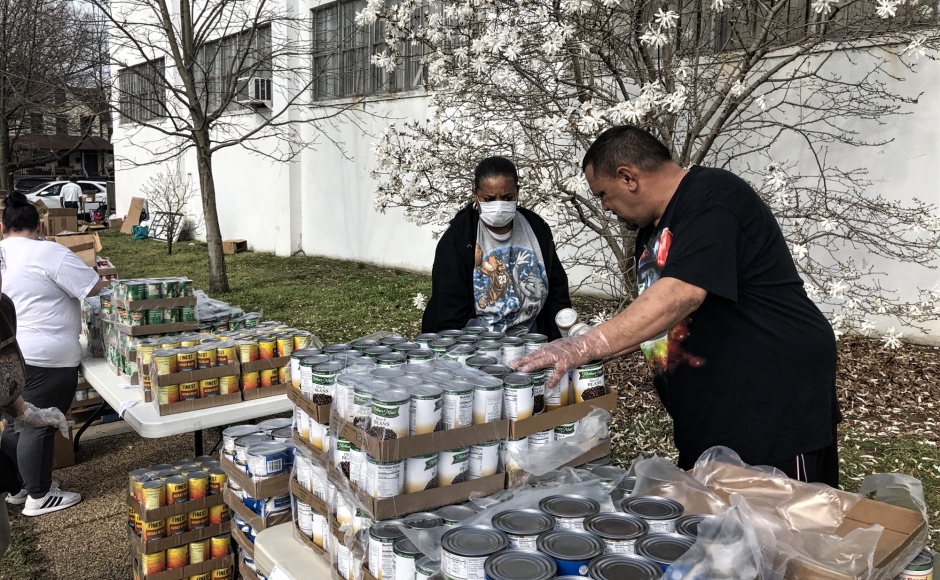
Volunteers at a pop-up neighborhood distribution point during the COVID-19 pandemic. Credit: Food Bank of South Jersey.
Groups like Cooper River Indivisible can help by tracking aid requests so that the Food Bank can chart increased demand and deploy its resources accordingly, DeLozier said.
Food Bank Hope Mobile trucks have the ability to flood temporarily areas in need, and have been deployed to Camden, Gloucester City, and Lindenwold already this week, he said.
DeLozier said the greatest help the agency can get is always financial support, as its buying agreements allow the Food Bank to procure significant quantities of products at prices well below retail cost, effectively multiplying the amount of money contributed.
“Please continue to donate,” he said. “We’re putting out as much food as we can possibly put out. We’re going to extended hours shortly, putting out emergency food boxes; we’re setting up production lines to do that so we can get more volume.”
Sheridan also encouraged neighborhood groups to continue to organize and tighten up lines of communication for the times when COVID-19 cases spike. Cooper River Indivisible is still gathering requests for aid, and may switch to an adopt-a-family model if members are unable to help with food distribution.
Resources for doing so, including an aid request form, can be found here.
To donate to the Food Bank of South Jersey COVID-19 response, click here.
Read our ongoing round-up of COVID-19 coverage here.
Get e-mails, follow us on Facebook, Twitter, and Instagram, or try Direct Dispatch, our new text service.

